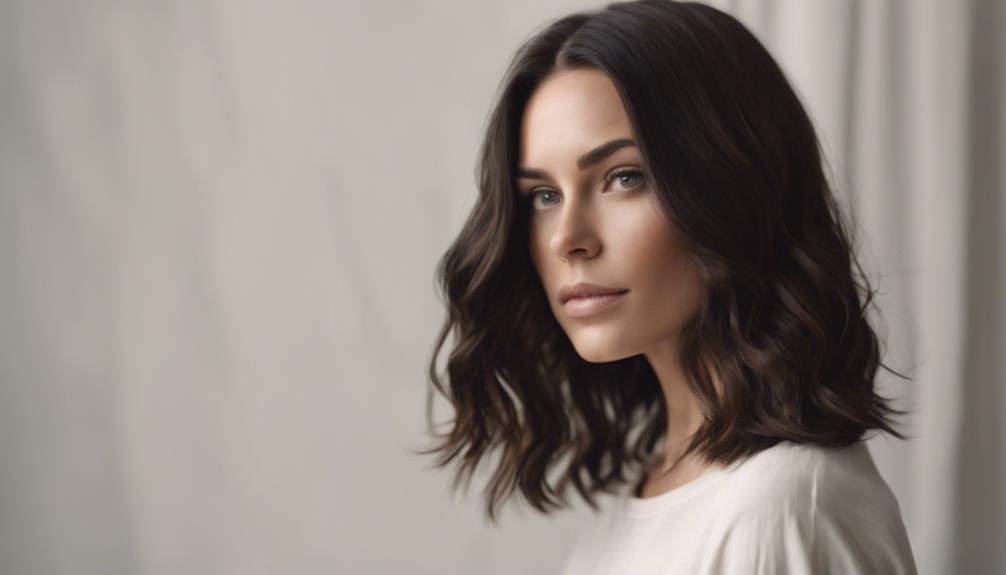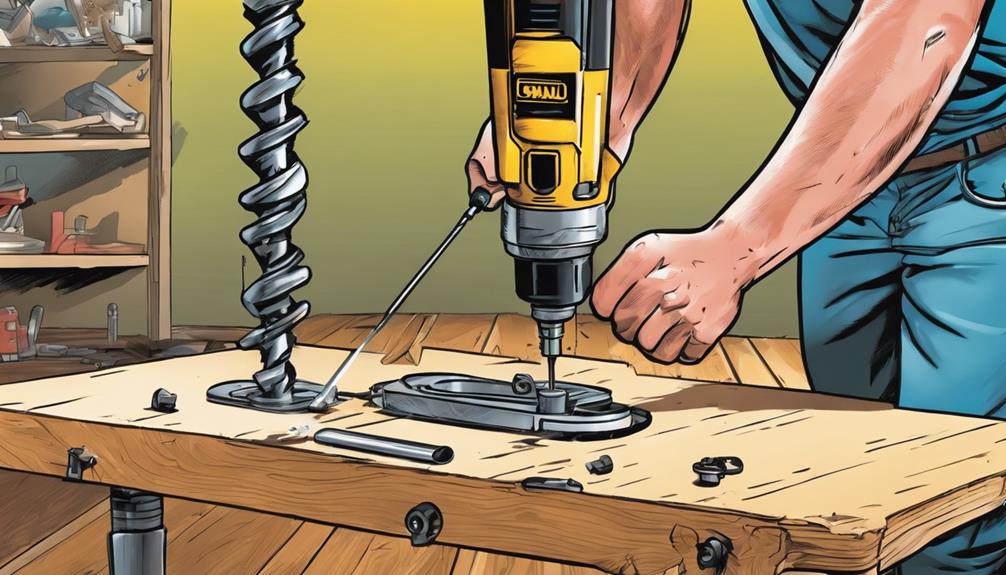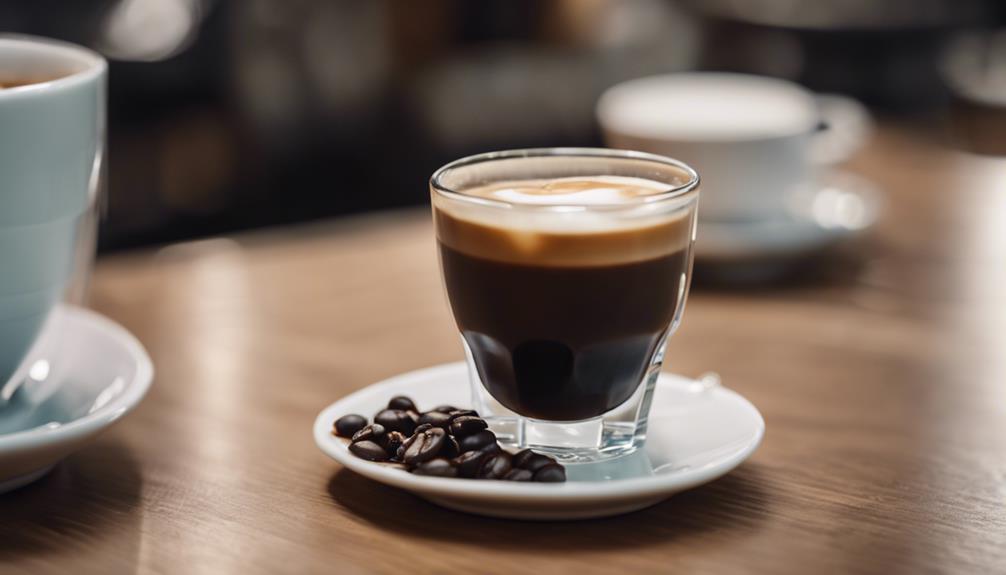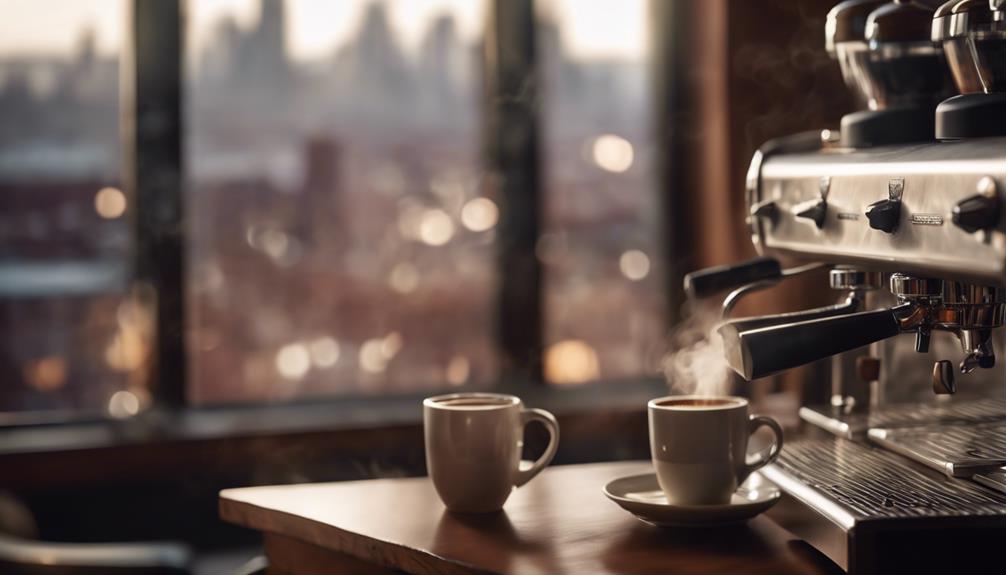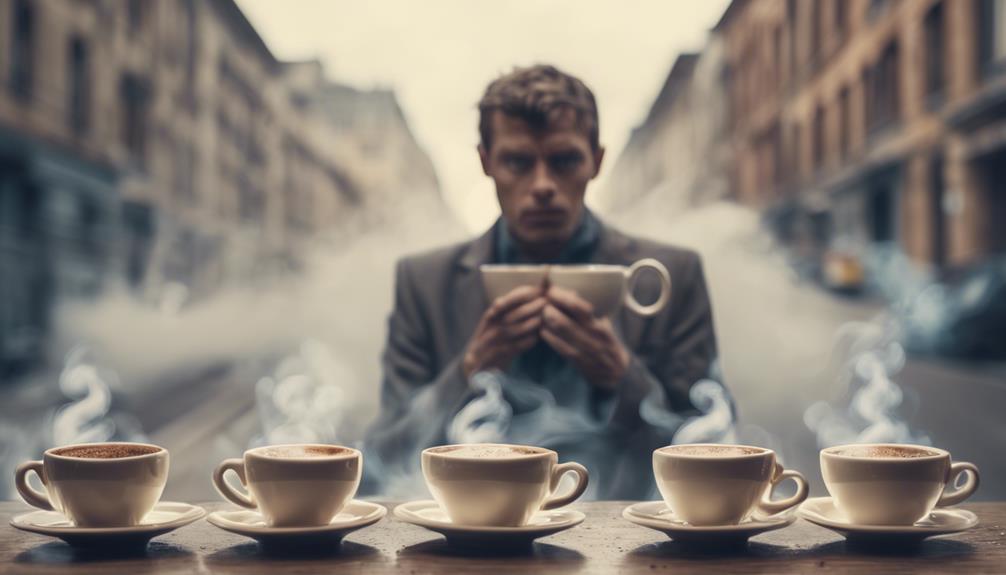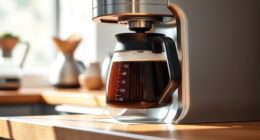You are on the verge of falling in love with espresso hair color, a luxurious, elegant shade that is ideal for those seeking to enhance the depth and dimension of their hair. This fashionable color is reminiscent of dark coffee, featuring rich brown and black tones with neutral undertones that complement a range of skin tones and eye colors. Subtle highlights can amplify the multidimensional effect using balayage techniques, and with consistent upkeep, you’ll be confidently flaunting this gorgeous shade in no time. Interested in discovering the tips for achieving the ideal espresso hair color and ensuring it remains vibrant?
Key Takeaways
- Espresso hair color is a rich, sophisticated shade resembling dark coffee with deep brown and black tones, suitable for various skin tones and eye colors.
- To achieve the perfect espresso shade, start with a consultation with a professional colorist for assessment and use high-quality color formulas like Color Touch or Koleston Perfect.
- Regular maintenance is crucial, including touch-ups every 4-6 weeks, using sulfate-free products, and incorporating color-depositing masks or toning gloss weekly to combat fading.
- Styling options include adding dimension with soft waves or curls, accessorizing with gold or bronze tones, and experimenting with different parting styles to highlight multifaceted tones.
Understanding Espresso Hair Color
When you imagine espresso hair color, you likely picture a rich, sophisticated shade that's reminiscent of a dark, bold cup of coffee. And you're not far off! Espresso hair color is characterized by a blend of deep brown and black tones, creating a dark brown shade that's both dramatic and elegant. The neutral undertones of this versatile color make it suitable for a wide range of skin tones and eye colors, allowing you to personalize the look to your unique features.
To add dimensionality to your espresso hair, consider adding subtle highlights using the balayage technique. This will give your locks a subtle shimmer and depth without stark contrasts. Whether you opt for permanent or semi-permanent dyes, espresso hair can be achieved through various coloring methods, offering you flexible styling options.
To keep your espresso hair looking its best, regular maintenance is key. This includes touch-ups every 4-6 weeks and using sulfate-free hair care products to preserve the vibrancy and health of your color-treated hair. With the right care, your espresso hair color will remain rich, vibrant, and full of life.
Pre-Dye Essentials and Preparation
Before you start your espresso hair color journey, it's crucial to prep your hair and gather the necessary tools to guarantee a successful application process.
First, conduct a patch test to confirm you're not allergic to the dye and it's suitable for your hair type.
Next, gather your pre-dye essentials, including gloves, an applicator brush, a mixing bowl, and a protective cape to prevent dye stains on your clothing.
Make sure your hair is clean and dry before applying the dye, as freshly washed hair can lack natural oils that protect your scalp.
Apply a barrier cream around your hairline to prevent dye stains on your skin, assuring a cleaner application process.
If you're unsure about the process, consider consulting a professional colorist who can help determine the best espresso shade for your complexion and provide guidance on hair care adjustments post-dyeing.
Achieving the Perfect Espresso Shade

With your hair prepped and ready, now it's time to focus on crafting the perfect espresso shade that complements your skin tone and personal style. To achieve the trendy espresso brown hair, consider consulting with a professional colorist to determine the right mixture of tones and shading. They can help you find the perfect balance of warm and cool undertones to enhance your natural features. Once you have the perfect shade in mind, you’ll be one step closer to rocking the trendy espresso brown hair of your dreams. If you decide to take on the challenge yourself, be sure to use high-quality hair dye and follow the instructions carefully to avoid any potential mishaps. Additionally, factors such as hair porosity and previous coloring treatments can affect the outcome, so it’s essential to understand the reasons for weak espresso before diving in. With the right preparation and know-how, you’ll soon be able to enjoy the rich, luxurious look of espresso brown hair.
To achieve this trendy hair color trend, follow these expert tips:
- Consult a pro: Start with a consultation with a professional colorist to assess your hair condition and discuss your desired tone and depth.
- Balayage technique: For dark brunette hair, use a balayage technique with a lightener, lifting the hair only one to two shades before toning with cool or caramel brown highlights for enhanced dimension.
- Reverse balayage: For medium or light brown hair, consider a reverse balayage approach, applying dark brown lowlight panels to create contrast while maintaining some lighter highlights.
- High-quality formulas: Employ high-quality color formulas, such as Color Touch or Koleston Perfect, to achieve rich espresso tones, ensuring even application and ideal results.
Post-Dye Hair Care and Maintenance
You'll need to revamp your hair care routine to preserve the richness and vibrancy of your new espresso locks. Switch to color-treated hair care products, such as sulfate-free shampoos and conditioners designed specifically for colored hair. This will help maintain the integrity of your espresso hair color and prevent fading.
Regular deep conditioning treatments are essential to prevent dryness and keep your espresso strands hydrated and healthy. Limit heat styling to reduce damage, and always use a heat protectant spray when styling to preserve color integrity and hair health. Schedule regular trims every 4-6 weeks to maintain hair health and prevent split ends, ensuring your espresso color remains fresh and vibrant.
Incorporate a color-depositing mask or toning gloss into your routine weekly to combat fading and enhance the richness of your espresso hue. By following these tips, you'll be able to maintain the vibrant, rich tone of your espresso hair color and keep your locks looking healthy and gorgeous.
With the right hair care routine, you can enjoy your new espresso hair color for months to come!
Styling and Customizing Your Espresso Hair
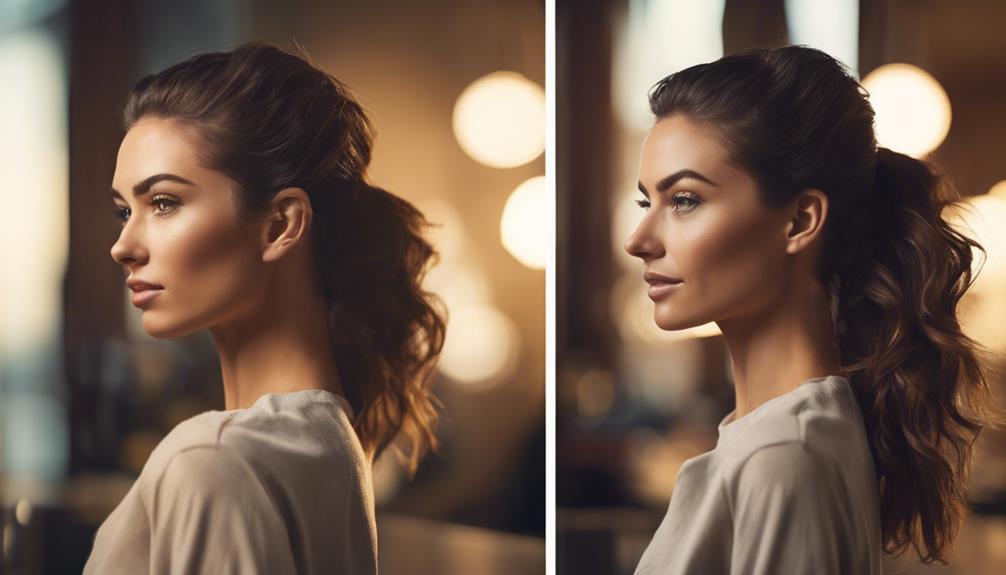
Now that you've achieved the perfect espresso hair color, it's time to release its styling potential and make it truly yours. To take your espresso hair to the next level, consider the following styling tips:
- Add dimension with soft waves or curls: This will enhance the richness of your espresso hair color and showcase its depth.
- Accessorize with gold or bronze tones: These warm tones will beautifully complement your espresso hair, adding a touch of elegance.
- Experiment with different parting styles: Try a deep side part or middle part to highlight the multifaceted tones of your espresso hair.
- Incorporate highlights or balayage: Techniques like caramel or copper can create a personalized look that adds warmth and contrast to your base espresso color.
Frequently Asked Questions
What Undertone Is Espresso Hair Color?
When considering a new hair color, you wonder what undertone would suit you best. The answer is, espresso hair color has neutral undertones, leaning towards cool tones, which helps avoid brassiness and maintains a polished look that complements your skin tone.
What Hair Color Is Espresso?
Imagine a warm cup of dark coffee on a chilly morning – that's the essence of espresso hair color! You'll get a rich, deep blend of dark brown and black tones, creating a sophisticated, elegant look that's perfect for you.
What Is the Most Trendy Hair Color Right Now?
You're wondering what's hot in hair color right now, and the answer is: it's all about rich, bold shades! As of 2023, espresso hair color takes the top spot, offering a luxurious, deep tone that flatters many skin tones.
What Shade Is Espresso?
You're wondering what shade espresso is? It's a rich, dark brown base with subtle black and dark brown tones, reminiscent of a cup of espresso coffee, with a neutral tone that complements various skin tones and eye colors.
Conclusion
With your espresso hair color, you're now a master of mesmerizing, mocha-inspired magnificence.
Your rich, robust locks radiate ravishing sophistication, making you the center of attention.
As you strut your stuff, your sumptuous strands shimmer in the light, showcasing a depth of dimension that's simply stunning.
Savor the spotlight, because with espresso hair, you're serving up a style that's truly sublime.
